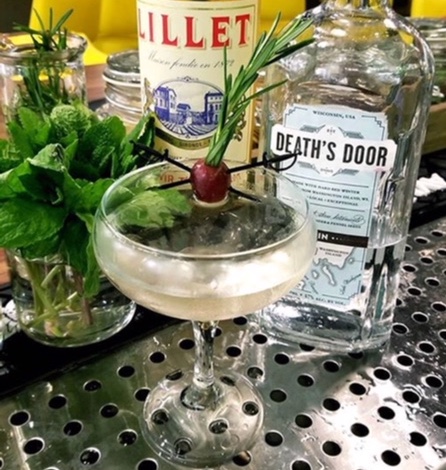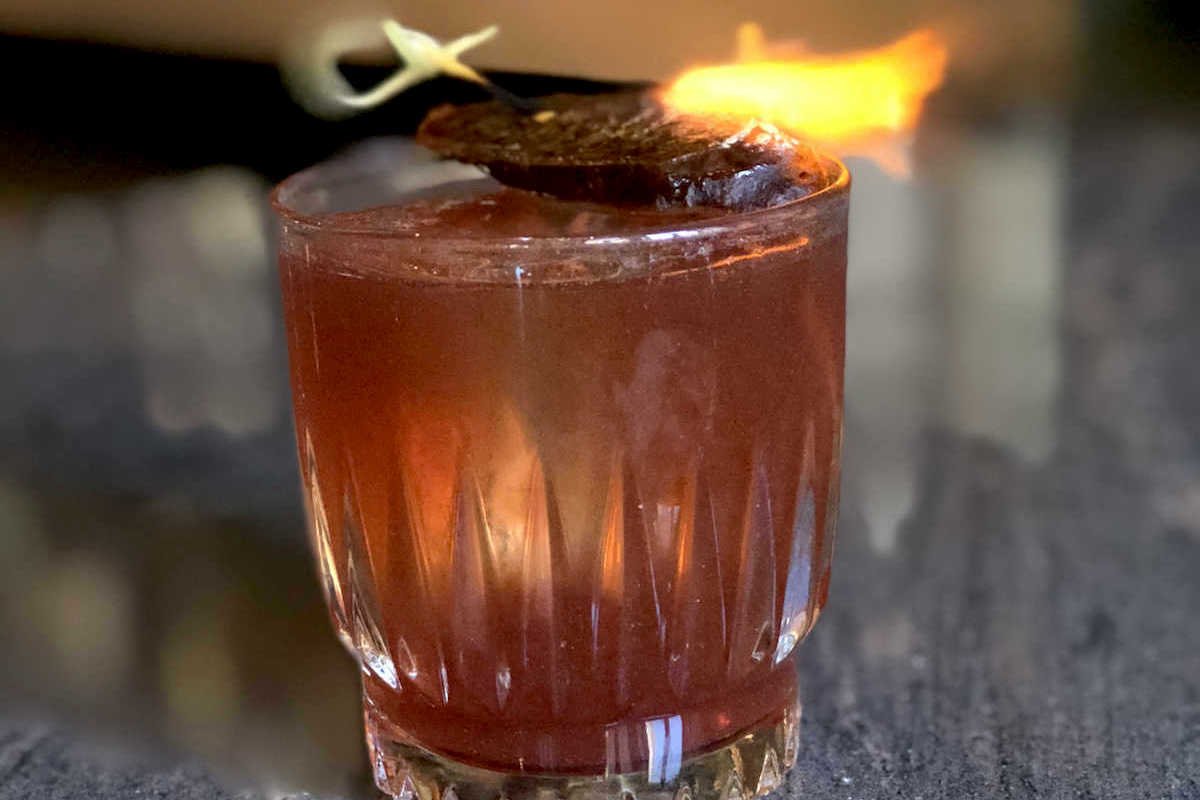It’s not just the USDA that’s trying to curtail our sugar intake. Some bartenders are getting in on the act, too, as savory cocktails are showing up on cocktail menus all around the country.
In part, we can credit the changing palates of American drinkers, many of whom are ready to branch out from drinks laden with juices and syrups.
In the early days of craft cocktails, “people did want it a bit sweeter, but then it started to dry out dramatically,” said Jeremiah Blake of The Green Hour, an absinthe-focused cocktail bar in Nashville. “You want to have a good night, but not have that sugar hangover in the morning.”
Bartenders are also diving into the kitchen, in search of new inspiration beyond savory classics like the Martini and the Bloody Mary. Hence modifiers like red pepper puree, liquid smoke and beet puree; and bold base spirits like herbaceaous aquavit and nutty sherry.
Here then, six steps to savory success:
1. Start with food, then work backwards. “When coming up with a savory cocktail I usually draw my inspiration from a food dish or pairing,” says Benny Hurwitz, bartender at Dram & Grain in Washington, D.C. “Once I have an idea for the flavor profile I figure out how to capture that flavor with a spirit and combine it with other spirits and modifiers that mesh well. Overall I would not say the creation process is much different than creating other cocktails.”
In fact, many bartenders we spoke with cited The Flavor Bible as one of their top sources of inspiration, both in terms of flavor profiles, and in finding tastes that play well together. Blake even keeps his own version at the ready, which he adds to after memorable dishes.
2. Make the Gibson your own. The Martini is, of course, a savory stalwart. That goes double when you swap the olive for an earthy, briny, pickled onion and call it a Gibson. But that smack across the face of salt and vinegar doesn’t have to be confined to onions. “Six menus ago I realized how fun it might be to make the Gibson more approachable, and made a pickle out of sweet peas,” said Jessica Weinstein, bar director for Hank’s Oyster Bar and Hank’s Cocktail Bar in D.C. That led to experiments with pickled radish, Japanese squash, and grapes, to name a few. “Every time we choose a fruit or vegetable, we create a brine to pair with the spirit we have chosen for the Martini,” she says. “It’s always menu’ed as ‘I’m Sorry Miss Gibson.’”

An iteration of the I’m Sorry Miss Gibson cocktail.
3. Play around with salt. Speaking of salt, a little salinity goes a long way in upping the savory quotient, whether it’s sea salt or celery salt. “It’s just like salt in a cookie or a marshmallow to balance out the sweetness,” says Blake. “It makes a huge difference even in a Manhattan or Negroni, or anything with a bitter element.” Rather than throw in a pinch, he likes to make a 3:1 or 4:1 saline solution for control and consistency.
4. And with umami. “Umami cocktails have always been a love of mine,” said Weinstein. “We wanted to do something with dried mushrooms, and something about them always brought me to scotch.” The result was the Sho-Ku-Geki, in which Loch Lomond is infused with the mushrooms, then stirred with Peychaud’s, Drambuie, and tamari sauce. But Weinstein warns: “Most people’s first cocktails were things like Margaritas, Vodka Sodas, and Cosmos, so a Mushroom Scotch Sour is far from understood.”

PDT’s Jeff Bell
5. Don’t ignore sugar completely. “You need something to balance the citrus in most drinks,” says Jeff Bell, the general manager at the legendary PDT in New York. “Some sweetness brings out the other flavors. Not enough can mask the other flavors. Witness the Amalfi Time, a creation of his that blends tequila, manzanilla sherry, Don Ciccio Finocchietto (a slightly sweet fennel liqueur), and lemon. His final touch: thyme syrup, which rounds out the drink, while proving that even a sweet element is capable of bringing out savory flavors.
6. But if you do, mind the mouthfeel. Sugar doesn’t bring only sweetness. It also provides viscosity and mouthfeel, so you’ll need to make that up elsewhere. Blake likes to employ a bit of pineapple juice, which introduces its own acid along with sweetness, or sherry for its nutty roundness. His bar is a chocolate shop by day, so he’s also partial to the dry richness of chocolate and coffee.
Hurwitz likes to lean on spice in place of sugar. “Fat washing with meat or nuts also adds an oily or buttery texture that can easily replace the ‘fat’ that you get from sugar,” he says. Exhibit A: I Got Sunburnt at a Mexican Pig Roast (pictured at top), an Old-Fashioned riff he developed over a plate of cheese and charcuterie that employs both spice and fat washing. Recipe below…
I Got Sunburnt at a Mexican Pig Roast
2 dashes Angostura
0.5 oz D&G Cacao-Chili Liqueur
0.75 oz Luxardo Sangue Morlacco
1.5 oz Chorizo Fat-Washed WhistlePig 10 Year Rye*
Build in a mixing glass, and stir with ice. Strain over a large cube into a rocks glass. Express and discard lemon peel, then garnish with cured Chorizo on skewer.
*Chorizo Fat-Washed WhistlePig 10 Year Rye
750 ml WhistlePig 10 Year Rye
4 raw chorizo sausages
3 oz water
3 oz canola oil
Saucepan
2 oz measuring cup
32 oz measuring cup
Freezer
Chinois strainer
Cut sausages out of casing and add to saucepan with oil and water. Cook on medium-high heat until all of the meat is fully cooked. Render one half ounce of chorizo fat into a two ounce measuring cup. Whisk together liquid fat and rye whiskey in a 32 ounce measuring cup until they are thoroughly integrated. Set in freezer uncovered for 3 hours. Remove solidified fat by straining through chinois, and put whiskey back in original bottle.



